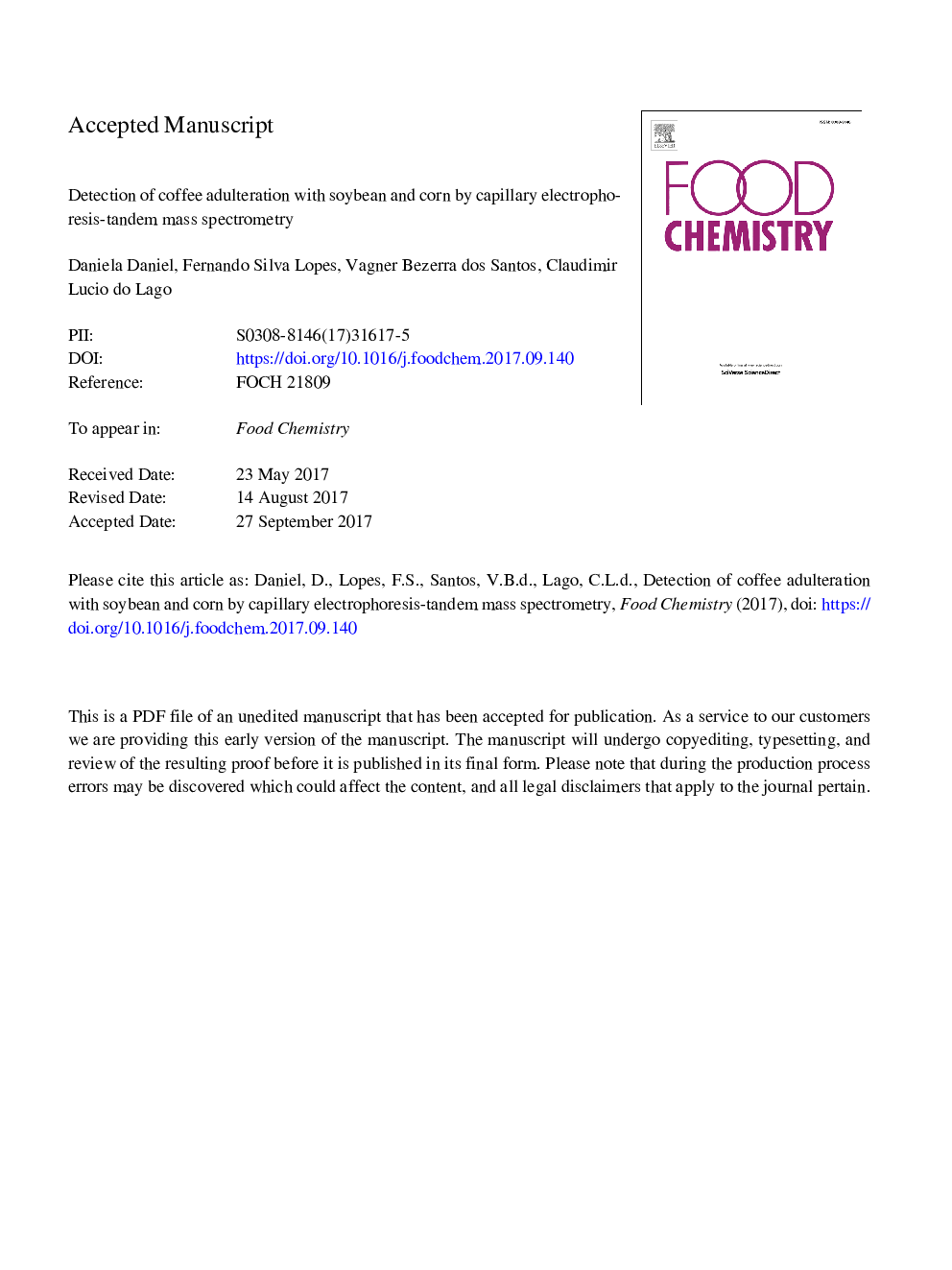| Article ID | Journal | Published Year | Pages | File Type |
|---|---|---|---|---|
| 5132563 | Food Chemistry | 2018 | 26 Pages |
Abstract
The detection of coffee adulteration with soybean and corn by capillary electrophoresis-tandem mass spectrometry was accomplished by evaluating the monosaccharides profile obtained after acid hydrolysis of the samples. The acid hydrolysis, using H2SO4 as a catalyst, increases the ionic strength of the sample impairing the electrophoretic separation. Therefore, Ba(OH)2 was used to both neutralize the medium and reduce the content of sulfate by precipitation of BaSO4. The best separation of nine determined monosaccharides (fucose, galactose, arabinose, glucose, rhamnose, xylose, mannose, fructose and ribose) plus inositol as internal standard was obtained in 500â¯mmol·Lâ1 triethylamine, pH 12.3. The monosaccharides are separated as anionic species at this pH. The proposed method is simple, fast (<12.0â¯min), present linear calibration curves (r2â¯=â¯0.995), and relative standard deviation for replicate injections lower than 5%. The LOQ for all monosaccharides was lower than 0.01â¯mmol·Lâ1, which is in accordance with the tolerable limits for coffee. Principal component analysis (PCA) was used to evaluate interrelationships between the monosaccharide profile and the coffee adulteration with different proportions of soybean and corn. Fucose, galactose, arabinose, glucose, sucrose, rhamnose, xylose, mannose, fructose, and ribose were quantified in packed roast-and-ground commercial coffee samples, and differences between adulterated and unadulterated coffees could be detected.
Keywords
BGEFucose (PubChem CID: 17106)Xylose (PubChem CID: 644160)Rhamnose (PubChem CID: 25310)Arabinose (PubChem CID: 66308)Mannose (PubChem CID: 18950)ESIElectrosprayCapillary electrophoresisbackground electrolyteCoffee adulterationCornSoybeanMass spectrometryFructose (PubChem CID: 5984)MonosaccharideGlucose (PubChem CID: 79025)electrospray ionization
Related Topics
Physical Sciences and Engineering
Chemistry
Analytical Chemistry
Authors
Daniela Daniel, Fernando Silva Lopes, Vagner Bezerra dos Santos, Claudimir Lucio do Lago,
